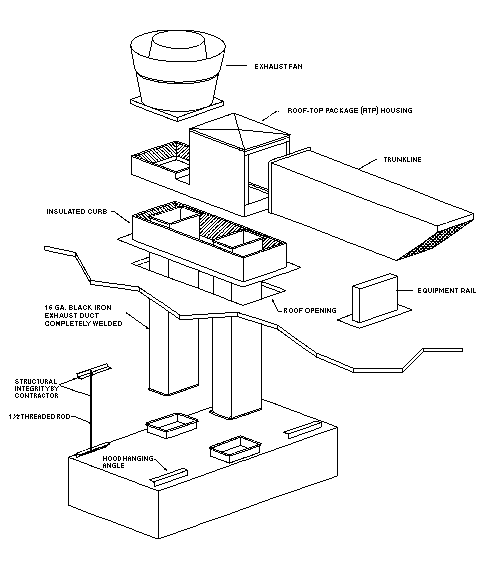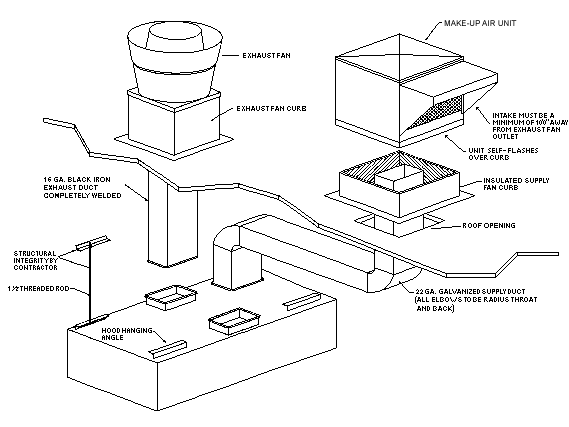|
|
|
Prior to installing the
stainless steel ventilation hood, the installing contractor should thoroughly
review the plans and specifications of the project. The contractor should
determine the exact location of the cooking hood and it should be determined if
adequate room is available to install all ductwork with proper clearances from
combustible material.
It is also imperative that the
roof top package or curbs be installed in such a way as to minimize any
offsetting in the exhaust duct system. All overhead beams or angles must be
structurally strong enough to support the weight of the hood system. It is often
necessary to strengthen existing structural beams, as they are not designed to
carry the weight of a stainless steel hood.
NFPA 96, BOCA, the Southern
Building Code and local authorities having jurisdiction call for minimum
clearances between the cooking hood, exhaust ducts and building materials which
are combustible. The normal requirement between the hood, duct and combustible
materials is an 18" clearance. However, this clearance can be lowered based on
NFPA 96 Appendix A, BOCA or UMC Codes. It is important that you check with local
authorities having jurisdiction to make sure the method of installation is
suitable and satisfactory with their requirements.
A minimum of four 8" long mounting angles or two 8" long and full length
mounting angle, depending on hood type, are
provided with each hood. Larger hoods will have additional
brackets. (The submittal drawings indicate the location of these brackets to
enable the contractor to make preliminary plans for hanging the hoods.) All
hoods are to be hung with 1/2" all-thread rod. Refer to the following pages for
recommended hanging heights.
It is extremely important that the hood be hung
level, with the supply and exhaust risers on the hood located
directly beneath the openings in the roof. It is advisable to
finalize the location using a plumb-bob. The following pages show
exploded views of the hood with a Roof Top Package unit and the
hood with separate fans.
|
|

|
|
The Hood With Roof Top Package Unit
|
|
|

|
|
The Hood With Separate Fans
|